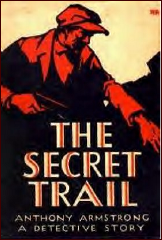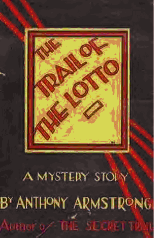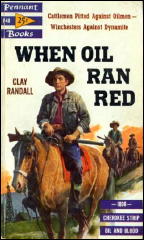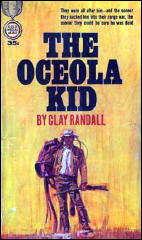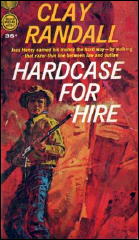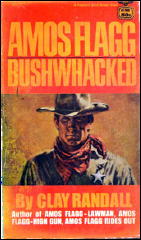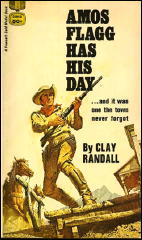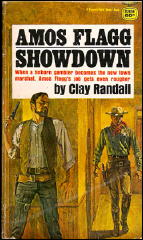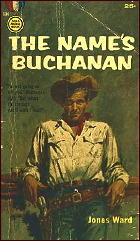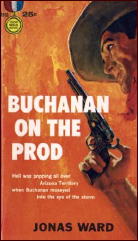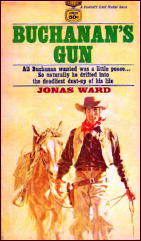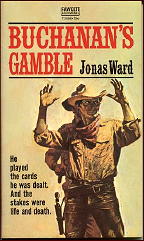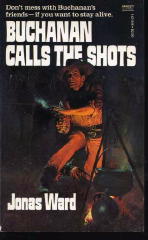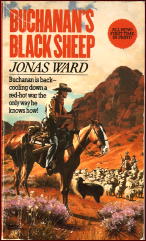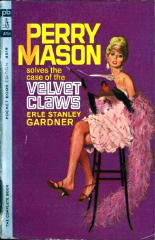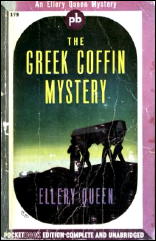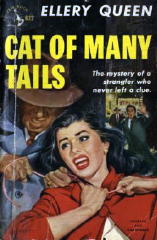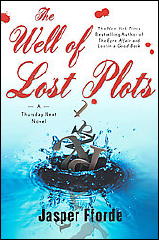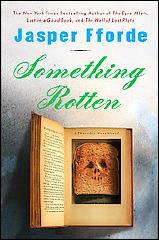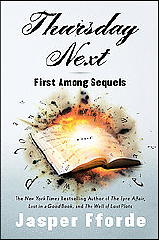Sun 29 Mar 2009
Review: SUSANNAH STACEY – Body of Opinion.
Posted by Steve under Authors , Bibliographies, Lists & Checklists , Crime Fiction IV , Reviews[2] Comments
SUSANNAH STACEY – Body of Opinion.
Pocket Books; paperback reprint. First printing, March 1991. Previously published in the US by Summit Books, hardcover, February 1990. Prior UK hardcover edition: Bodley Head, 1988, as by Jill Staynes & Margaret Storey.
There is a mystery here – and one for which I do not know the answer – and that is why the books written by this pair of British authors appeared under their own names in the UK, but as by a pen name in the US. I haven’t any idea why.
But since both authors are now in their late 70s or early 80s, and no books by them under any byline have appeared in over ten years, I think it’s safe to assume that their entry in the Revised Crime Fiction IV, by Allen J. Hubin, is now complete:
Goodbye, Nanny Gray (n.) Summit 1988; UK: Bodley Head, 1987 as by Jill Staynes & Margaret Storey.
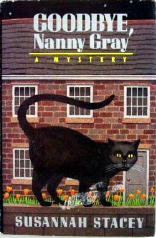
A Knife at the Opera (n.) Summit 1989; UK: Bodley Head, 1988 as by Jill Staynes & Margaret Storey.
Body of Opinion (n.) Summit 1990; UK: Bodley Head, 1988 as by Jill Staynes & Margaret Storey.
Grave Responsibility (n.) Summit 1991; UK: Bodley Head, 1990 as by Jill Staynes & Margaret Storey.
The Late Lady (n.) Pocket Books 1993; UK: Barrie, 1992 as by Jill Staynes & Margaret Storey.
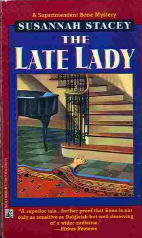
Bone Idle (n.) Pocket Books 1995; UK: Century, 1993 as by Jill Staynes & Margaret Storey.
Dead Serious (n.) Pocket Books 1997; UK: Headline, 1995 as by Jill Staynes & Margaret Storey.
Hunter’s Quarry (n.) Pocket Books 1998; UK: Quarry (Hale 1999), as by Jill Staynes & Margaret Storey.
As long as Elizabeth Eyre has been mentioned, though, here’s a list of the books the two authors wrote under that name:
Death of a Duchess (n.) Headline 1991; Harcourt, US, 1992.
Curtains for the Cardinal (n.) Headline 1992; Harcourt, US, 1993.

Poison for the Prince (n.) Headline 1993; Harcourt, US, 1994.
Bravo for the Bride (n.) Headline 1994; St. Martin’s, US, 1995.
Axe for the Abbot (n.) Headline 1995; St. Martin’s, US, 1996.
Dirge for a Doge (n.) Headline 1996; St. Martin’s, US, 1997.
The Eyre books all take place during the Italian Renaissance; the leading character in each is a fellow named Sigismondo, who quoting from Publishers Weekly is a “brilliant deductionist [who] is bald like a monk but who fights like a soldier, and his slack-jawed manservant, Benno, who has an air of ‘amiable idiocy.’”
That’s a description that makes me want to read these book right away, and if you think I’m joking around when I say that, then you don’t know me very well.
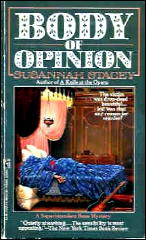
To the book at hand, though, the third in the series. It’s not clear to me that Superintendent Bone works for Scotland Yard or if he’s only a member of the local police force, but when a murder occurs at a party at a famous rock singer’s mansion, he’s the first to be called in. (One passing reference, on page 29, suggests that this is not the first time he’s met Ken Cryer and his son Jemmy, so that makes me believe he’s local.)
Dead is a woman with a deeply held secret, and since this time the writer who wrote the blurb for the back cover doesn’t mention it, I won’t either, except to say two things — the first being that part of this sentence is not exactly true, and the second that the secret just mentioned is NOT the list of blackmail targets that’s found later in the victim’s home.
What that does do is increase the number of possible suspects by a factor of at least ten — theoretically. Since it’s more than likely that the killer was seen at the party, invited or not, it’s still a matter of only dogged police work before his or her identity is uncovered.
One does hope for more, however, what with all of the clues, false leads, red herrings, misleading directions and crimes on the side that Bone and his crew must sort through. But alas, no, the ending is as straight (and flat) as a string.
Much more interesting is Bone’s home life, recently widowed with a young precocious young daughter to bring up on his own – but with the possibility of a new love in his life, a woman who is beginning at last to break down the emotional shields he’d set up after the auto accident took his wife away.
I think the two authors had the Golden Age of Detection in mind when they wrote this book, updated by all kinds of sexual activity that went unreported in mystery fiction of the 1930s. That’s the overall model they’re following at least, but if so, I can’t tell you that they succeeded — although it’s busy, the plot simply isn’t complicated enough.
On the other hand, the writing is excellent more often than not, with many a nice turn of phrase to complement the events taking place. The superintendent’s incipient love affair — deliberately chaste in comparison to the mystery itself, perhaps — may have been the even greater enticement for readers to be look for the next installment when it appeared.
